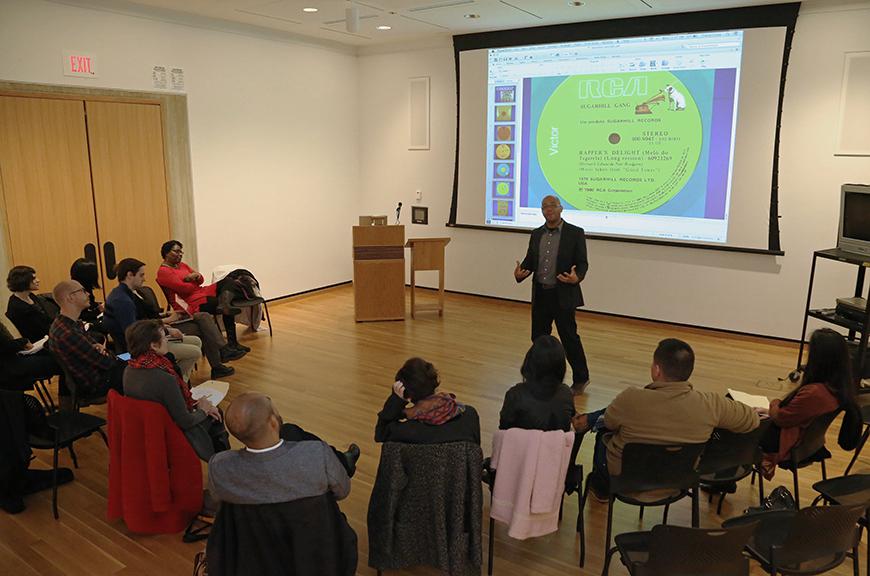
Final presentations for the spring 2014 seminar, Home and the World: Urban Representations of Harlem and the South Bronx. The class included a visit from Earl Lewis, president of the Mellon Foundation. William Staffeld / AAP
Home and the World: Urban Representations of Harlem and the South Bronx (ARCH 6819, ASRC 6819, SHUM 6819)
Wednesdays, 10:10–12:05
Course Instructors: Noliwe Rooks (Africana studies) and Mary N. Woods (architecture)
This seminar is a cross-disciplinary engagement with questions of urban representation across the humanities and design disciplines. Harlem and the South Bronx, two places that loom large in local and global imaginaries, are the sites for these explorations. The seminar creates a space for collaborations between graduate students from Architecture, Art, and Planning (AAP) and humanities students in Arts and Sciences (AS). It provides them with the digital, intellectual, and theoretical tools for understanding both historical and contemporary issues involved with representation in the urban environment.
The class relies extensively on collections in the Herbert F. Johnson Museum of Art and Olin Library, and will include workshops on new and established digital tools such as text mining, data visualization and mapping, as well as oral history and ethnography to represent and problematize these two urban environments. It will also include faculty from various disciplines in AAP and AS as well as professional staff from the library and museum. The participating students will receive $1,000 in research funds to support their final projects. Advanced undergraduate students may apply, but preference will be given to graduate students.
During the semester, the class will focus on various methods of making, collecting, exhibiting, and studying urban representations in Harlem and the South Bronx over time and space. Flows and migrations of the local outward and the global inward through wordscapes, imagescapes, and soundscapes will also be examined. The aim is for students to leave the class with a set of intellectual and digital tools which will inform their individual, intellectual, and professional trajectories beyond the conclusion of the course.
Given the collaborative and interdisciplinary thrusts of the seminar, students will not simply write papers; they will be expected to bring their research, analysis, and methods to bear on final projects that involve in-depth explorations of the seminar themes using the digital and other skills they have acquired in the seminar. These might be either individual or collaborative projects grounded in humanities research and methods as well as design and creative arts such as oral histories, mapping, site-specific installations, online sites, sonic soundscapes, still and video projects, and campus and community symposia or exhibitions.